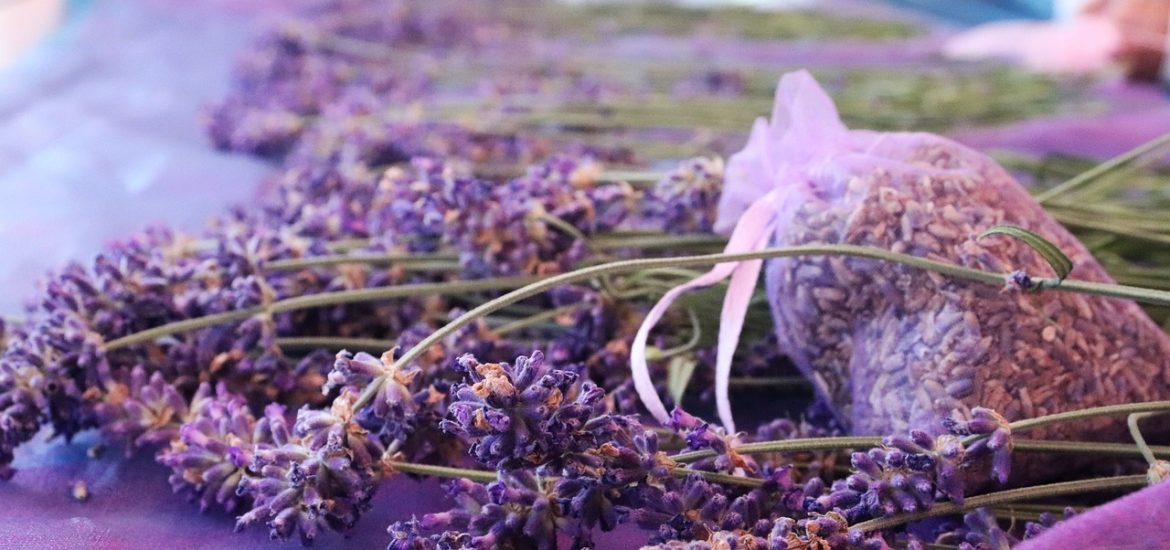Are you looking for a way to make your own homemade lavender oil? Find out how to filter homemade Lavender Oil the natural way
Lavender oil has many benefits and is widely used for aromatherapy, cosmetics, and even culinary applications. With a few simple ingredients and some patience, you can craft your own lavender oil at home. In this article, we’ll walk you through the process of crafting homemade lavender oil and filtering it with muslin cloth. Let’s get started!
Table of Contents
Introduction to Homemade Lavender Oil
If you’re looking for a way to get the benefits of lavender oil without spending a lot of money, making your own lavender oil is a great option. It is easy to make, and you can customize it to fit your specific needs. All you need is some lavender buds, a carrier oil, and a few supplies.
The benefits of homemade oil are numerous. This oil has many therapeutic properties, including reducing anxiety and promoting relaxation. It can also be used to reduce inflammation and promote healing of cuts and bruises. It has also been used to treat headaches, insomnia, and digestive issues.
Here are some of the proven properties of lavender oil:
- Soothes skin: It is known for its anti-inflammatory and antibacterial properties, making it effective for soothing and healing skin conditions such as acne, eczema, and psoriasis. When used in a carrier oil such as almond or coconut oil, it can be applied topically to the skin to soothe and heal.
- Relieves stress and anxiety: It is well-known for its calming and relaxing properties, and is often used in aromatherapy to promote relaxation and relieve stress and anxiety. When infused into oil, it can be used in massage or applied topically to help calm and relax the mind and body.
- Promotes sleep: It is also known for its ability to promote sleep and relieve insomnia. When used in aromatherapy, it can be diffused in the bedroom to promote a calm and restful environment. It can also be applied topically or used in massage to help promote relaxation and sleep.
- Repels insects: It is a natural insect repellent, and can be used to repel mosquitos, fleas, and other insects. When infused into oil, it can be applied topically to the skin to help repel insects.
- Relieves pain: It is also effective for relieving pain, particularly headaches and migraines. When infused into oil, it can be applied topically to the temples or neck to help relieve pain and promote relaxation.
These are treatments for any disease. Please consult your doctor for diseases.
What You Need to Craft Homemade Lavender Oil
To craft your own homemade lavender oil, you’ll need the following supplies:
- Lavender buds
- Carrier oil (such as olive oil, almond oil, or jojoba oil)
- Mason jar
- Cheesecloth or muslin cloth
- Funnel
- Dark-colored glass bottle
- Essential oil diffuser (optional)
Steps to Making Homemade Lavender Oil
Once you have all the supplies you need, you can start making your own homemade lavender oil. Here are the steps:
- Begin by filling your mason jar with the lavender buds.
- Pour your carrier oil into the mason jar, making sure to cover the lavender buds.
- Close the mason jar and shake it vigorously for a few minutes.
- Place the cheesecloth or muslin cloth over the top of the mason jar and secure with a rubber band.
- Place the mason jar with the cloth in a sunny spot and let it sit for 3-4 weeks. The oil will slowly extract the lavender’s essential oils.
- After 3-4 weeks, remove the cloth from the top of the mason jar and discard the lavender buds.
- Place the funnel over the top of the glass bottle and pour the oil through the funnel.
Filtering Your Oil with Muslin Cloth
Once you’ve poured your oil through the funnel, you’ll need to filter it with muslin cloth. This will help remove any impurities and leftover lavender buds that may be present in the oil. To do this, place the muslin cloth over the top of the funnel and pour the oil through it. The cloth will catch any impurities or particles, leaving you with a clean, pure lavender oil.

If you don’t have muslin cloth, there are a few alternatives you can use to filter your lavender oil. You can use cheesecloth, a paper filter, or a coffee filter. All of these will help remove any impurities and particles from your oil, leaving you with a clean, pure homemade lavender oil.
Tips for Filtering Homemade Lavender Oil
When making and filtering your homemade lavender oil, there are a few tips that can help ensure a successful outcome. Here are some tips to keep in mind:
- Make sure to use high-quality lavender buds for the best results.
- Let the oil sit for at least 3-4 weeks to ensure the lavender’s essential oils are fully extracted.
- Use a dark-colored glass bottle to store your lavender oil. This will help protect it from light and prevent oxidation.
- Filter your oil with muslin cloth to remove any impurities or particles.
- Store your lavender oil in a cool, dark place.
Troubleshooting Common Issues
If you’re having trouble with your homemade lavender oil, there are a few things you can do to troubleshoot the issue. Here are some tips:

- If your oil has a bitter taste, it may be due to the lavender buds. Try using a different type of lavender bud or adding a bit of honey or sugar to the oil.
- If your oil has an unpleasant smell, it may be due to oxidation. Make sure to store your lavender oil in a dark, cool place and use a dark-colored glass bottle.
- If your oil has a cloudy appearance, it may be due to impurities. Make sure to filter your oil with muslin cloth or another filtering material before use.
If you are still unclear about some of these issues, click here to ask me!
What to Do with Your Homemade Lavender Oil
Once you’ve crafted your own homemade lavender oil, there are a few things you can do with it. Here are some ideas:
- Use it for aromatherapy. Lavender oil is great for aromatherapy, and you can use it in an essential oil diffuser or simply add a few drops to your pillow or bathwater.
- Use it in cosmetics. Lavender oil is often used in lotions, creams, and balms due to its soothing properties.
- Use it in culinary applications. Lavender oil is a popular ingredient in many recipes, including salads, desserts, and beverages.
- Lavender oil for diffuser. Mix some lavender essential to the homemade oil and pour a tablespoon in your diffuser. Lavender essential oil benefits are systemic to whole body which is why it is recommended a lot. Lavender oil diffuser is extremely beneficial for a restful sleep.
Where is Lavender harvested?
Lavender is a hardy plant that is grown around the world in a variety of different climates and conditions. Here are some of the most common locations for lavender planting and farming:
- Provence, France: Provence is one of the most well-known and traditional locations for lavender farming. The climate in this region is ideal for growing lavender, with long, hot summers and dry, cool winters. The soil in this region is also rich in calcium and other minerals, which is ideal for growing high-quality lavender.
- Tuscany, Italy: Tuscany is another popular location for lavender farming, as the climate and soil conditions are similar to those in Provence. Lavender is grown in a variety of locations throughout Tuscany, from the rolling hills to the coastal regions.
- Bulgaria: Bulgaria is one of the largest producers of lavender in the world, with fields of lavender covering the rolling hills in the central part of the country. The climate in Bulgaria is ideal for growing lavender, with hot summers and mild winters.
- Washington State, USA: Washington State is a popular location for lavender farming in the United States, with many lavender farms located in the northwestern part of the state. The climate in this region is ideal for growing lavender, with mild summers and cool, damp winters.
- New South Wales, Australia: New South Wales is the largest lavender-growing region in Australia, with fields of lavender located throughout the state. The climate in this region is ideal for growing lavender, with long, hot summers and mild winters.
- England: Lavender is also grown in various parts of England, including the Cotswolds, Norfolk, and Kent. The climate in these regions is cooler and wetter than in Provence, but the soil conditions are still ideal for growing high-quality lavender.
These are just a few of the many locations around the world where lavender is grown and harvested.
Conclusion
Making your own homemade lavender oil is a great way to get the benefits of lavender oil without spending a lot of money. By making your own infused lavender oil at home, you can ensure that you are using a high-quality and natural product that is free from synthetic additives or chemicals. It can be a versatile and useful addition to your skincare, wellness, and household routines, and can help to promote relaxation, healing, and overall well-being. If you need a free prescription from an experienced holistic practitioner go here.
With a few simple ingredients and some patience, you can craft your own lavender oil at home. In this article, we’ve walked you through the process of crafting homemade lavender oil and filtering it with muslin cloth. Now that you know how to craft your own homemade lavender oil, you can start enjoying its many benefits!

